60 Soal dan Jawaban TKA Bahasa Inggris Kelas 9 SMP/MTs Ujian Akhir Untuk ke Jenjang SMA
Pembelajaran ini akan memberikan pengalaman dan gambaran untuk meningkatkan kemampuan diri.
TRIBUNPONTIANAK.CO.ID - Sebanyak 60 soal latihan dalam melaksanakan Tes Kompetensi Akademik (TKA) kelas 9 SMP/MTS tahun ini.
Pembelajaran ini akan memberikan pengalaman dan gambaran untuk meningkatkan kemampuan diri.
Untuk itu, soal latihan ini penting sekali untuk dipelajari, setiap soal sudah dilengkapi dengan kunci jawaban sebagai panduan belajar.
Pastikan setiap soal disimak dan dipelajari secara berulang dengan akses yang mudah secara online dari HP/PC.
Maka dari itu ikuti seluruh soal dengan seksama sebagai latihan.
Baca juga: 40 Soal dan Jawaban TKA Bahasa Indonesia Kelas 9 SMP/MTs, Hasil Nilai ke Jenjang SMA
SOAL TKA Bahasa Inggris Kelas 9 SMP/MTs
1. A 22-year-old man develops sudden weakness in both legs after a viral infection. Neurological examination shows absent deep tendon reflexes, flaccid paralysis, and preserved sensation. Cerebrospinal fluid analysis reveals elevated protein with normal cell count (albuminocytologic dissociation).
What is the most likely diagnosis?
A. Multiple sclerosis
B. Myasthenia gravis
C. Guillain-Barré syndrome
D. Amyotrophic lateral sclerosis
E. Poliomyelitis
Answer: C
2. During a health policy debate, policymakers are considering mandatory labeling of packaged foods to include calorie counts and sugar content. The intention is to encourage healthier consumer choices and reduce obesity prevalence.
Which principle of public health ethics is most relevant to justify this intervention?
A. Beneficence
B. Non-maleficence
C. Justice
D. Autonomy
E. Utility
Answer: A
3. In a clinical case, a 52-year-old man presents with persistent hypertension that does not improve despite lifestyle modifications and regular exercise. He reports a family history of cardiovascular disease and his BMI indicates overweight status.
What is the most appropriate initial pharmacological management for this patient?
A. Lifestyle modifications only
B. Thiazide diuretics
C. Beta-blockers as first-line therapy
D. Calcium channel blockers
E. High-dose statins immediately
Answer: B
4. A 68-year-old woman comes with complaints of frequent urination, excessive thirst, and unexplained weight loss over the last two months. Laboratory results show elevated fasting blood glucose at 180 mg/dL.
Which diagnostic test provides the strongest confirmation for the diagnosis?
A. Random blood glucose measurement
B. Oral glucose tolerance test (OGTT)
C. HbA1c test ≥ 6.5 persen
D. Fasting blood glucose on a single occasion
E. Urinalysis for glucose presence
Answer: C
5. In the past two decades, communication has transformed drastically. Social media has enabled people to connect instantly, share knowledge, and build communities across borders. However, it also creates problems such as misinformation, cyberbullying, and decreased face-to-face interaction.
What should students do according to the lecturer?
A. Use it as frequently as possible to share information
B. Avoid it completely to prevent misinformation
C. Focus only on the benefits and ignore the risks
D. Analyze both positive and negative impacts before deciding
E. Consider it as the best tool for education without limitations
Answer: D
6. A researcher is studying the effects of nutrition on childhood obesity in a primary school population. He collects data on BMI, dietary habits, and physical activity levels. The study design involves following the same children for five years.
What type of research design is most appropriate to classify this study?
A. Cross-sectional study
B. Case-control study
C. Randomized controlled trial
D. Cohort study
E. Meta-analysis
Answer: D
7. A 36-year-old woman presents with double vision that worsens with fatigue and improves with rest. Physical examination reveals ptosis and weakness in extraocular muscles.
Which receptor is targeted by autoantibodies in this disorder?
A. Dopamine receptor
B. Nicotinic acetylcholine receptor
C. Muscarinic acetylcholine receptor
D. GABA receptor
E. Serotonin receptor
Answer: B
8. A 50-year-old man presents with progressive weakness and muscle wasting in both upper and lower limbs, accompanied by fasciculations. Sensory functions remain intact.
Which motor neurons are affected in this condition?
A. Only upper motor neurons
B. Only lower motor neurons
C. Both upper and lower motor neurons
D. Cerebellar neurons
E. Sensory neurons
Answer: C
9. Many environmental scientists argue that the effects of climate change are not limited to rising global temperatures, but also include extreme weather events such as hurricanes, floods, and droughts...
What is the main idea being emphasized?
A. International agreements have no impact on climate change
B. Climate change only increases global temperature
C. Developing countries suffer the most from climate change
D. Economic growth and environmental sustainability often conflict
E. Hurricanes and floods are unrelated to climate change
Answer: D
Meaningful
soal dan jawaban
60 Soal dan Jawaban TKA Bahasa Inggris Kelas 9
Ujian Akhir Untuk ke Jenjang SMA
TKA Bahasa Inggris Kelas 9
soal dan jawaban TKA
Eksklusif Pontianak
| 50 Soal Ujian Sekolah PJOK Kelas 12 SMA SMK MA Terbaru Lengkap Kunci Jawaban Soal USBN Tahun 2026 |
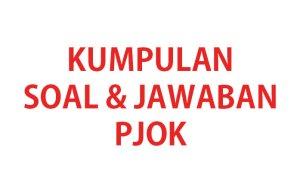
|
|---|
| 40 Soal dan Jawaban TKA Bahasa Indonesia Kelas 9 SMP/MTs, Hasil Nilai ke Jenjang SMA |
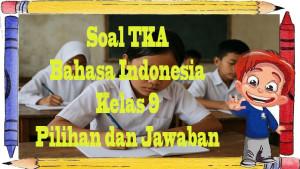
|
|---|
| 120 Notaris Jadi Objek Pemerikasaan MPDN Kota Pontianak, Jaga Kualitas dan Integritas Profesi |
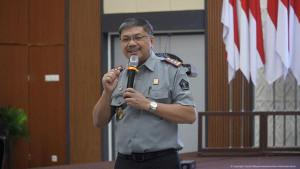
|
|---|
| Bank Kalbar Sabet Penghargaan Bergengsi dari The Iconomics! Bukti Nyata Dedikasi dan Pelayanan Prima |

|
|---|
| 40 SOAL dan Jawaban IPA Tes TKA Kelas 9 SMP/MTs Ujian Sekolah Akhir, Hasil ke Jenjang SMA |
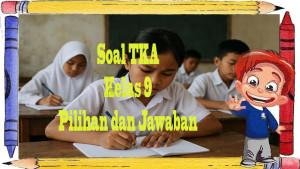
|
|---|


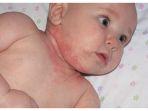

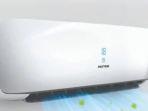





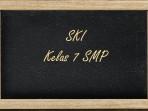

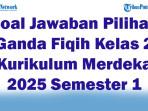


Isi komentar sepenuhnya adalah tanggung jawab pengguna dan diatur dalam UU ITE.